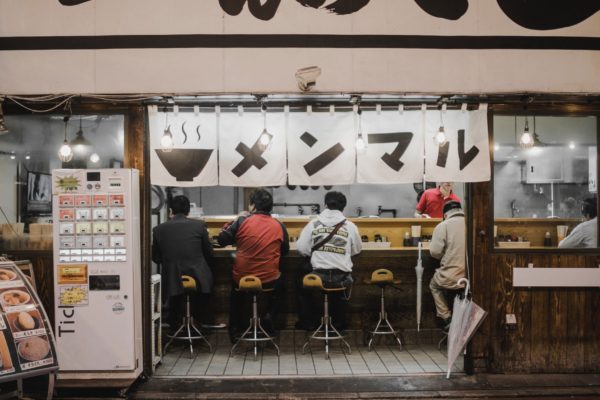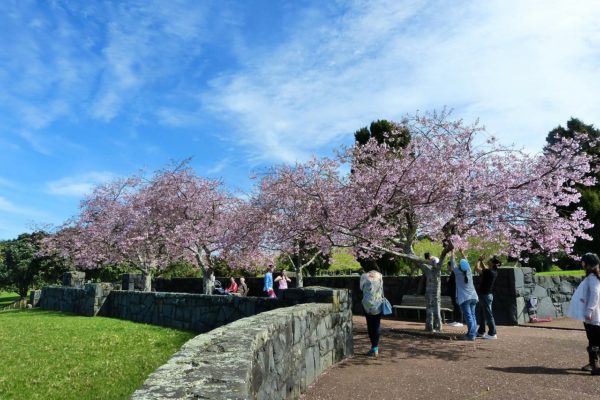Japanese culture… well, this really isn’t a topic that can be covered in only one article, but I will introduce some of its basics and hopefully we will get a chance to get into each of these in more depth in some of the later articles. But anyways, let’s get down to business.
For starters, I want to discuss the concept of culture. What is culture? According to Oxford Dictionary the word culture stands for the following: the customs and beliefs, art, way of life and social organization of a particular country or group.
Now that we have cleared this one thing up let’s check out some interesting facts about Japanese culture.
Religion
An important part of a culture is religion, after all. It must be noted that the Japanese concept of religion is very vague. They live according to many religious customs, but one cannot say that Japanese people are religious.
The two major religions in Japan are Shinto and Buddhism. These two have been introduced to Japan in totally different eras and situations. You could say that Shintoism is indigenous to Japan, unlike Buddhism, which was introduced to Japan from China. Nevertheless, these two complete each other perfectly: Shintoism is a religion about life and Buddhism provides a general idea of what happens to one’s soul after death.
Martial Arts
I think nobody would find it surprising to see this section coming up. While martial arts has deep roots in China too, Japan has some variations unique only to itself. To put it very simply, martial arts are a more sophisticated version of a certain aspect of being a warrior. I think the most famous one would be karate-dō. If you are in Japan for a long period of time you might get a chance to either personally experience some martial arts or at least watch yearly national tournaments. Here are some names worth remembering if you are into martial arts: kyuudō, iaidō, kendō, aikidō and so much more.
Artistic “dō”s
You might have noticed that in the upper section the names of the mentioned martial arts end with dō. Dō (道) literally means a road/way in Japanese, hence the way of the sword, the way of the bow, etc. While all of the above mentioned have a certain level of artistic expressionism to them, the most artistic dō-s would be the following: sadō – Japanese tea ceremony, shodō – calligraphy or artistic writing, and finally kadō – the art of flowers, i.e. ikebana.
It is important to keep in mind that the Japanese samurai and lords were usually very skilled in the above mentioned three, since it is said that these are necessary for perfecting one’s capability in martial arts.
Japanese theatre
If you are into visual artistics, I think Japanese theatre might be an interesting experience for you. There are three main types: kabuki, noh, bunraku. Out of all of these the most famous one would be kabuki which in a sense is the combination of drama, music and dance. I personally have been to kabuki performances twice, and I must say it’s quite amusing. Kabuki might be difficult to understand since there is not much talking happening. The performances I saw were both presented by a single actor who would act out a couple of characters. It is confusing, that’s for sure, but the confusion in itself is very satisfying. Believe me, this is an experience you wouldn’t regret.
Geisha
You have certainly heard the term geisha, probably even seen the movie Memoirs of a Geisha (if you haven’t yet, make sure to watch it, it’s an amazing movie). Nowadays geisha do not really have the same standing as they did in previous eras, but you can see young girls who are still learning the arts of a geisha if you visit Gion district in Kyoto. If you ever happen to be in Kyoto, one of the must-do things would be visiting Gion.
Japanese Traditional Attire
When it comes to Japanese traditional attire the word kimono automatically jumps to one’s mind. By the way, in Japanese the kanji for kimono literally stand for “things to wear”. I find this to be a bit cute. But anyway, there is also yukata which is a summer version of a kimono, and is generally cheaper, as well as has less layers. Many places in Japan offer you the opportunity to wear a yukata and walk around in the city for a day, and for a very nice price of around $30-40. The case is a bit different with kimono though, since these have enormous prices and can cost more than a car!
Japanese Cinematography
Japan has produced some of the best movies in the 20th century. A name that comes to your mind immediately would be that of Akira Kurosawa, a world renowned film director. Some of his rather famous works would be Seven Samurai, Rashomon, The Hidden Fortress. It is amazing as it is that he has made these fabulous movies, but it must be mentioned that his The Hidden Fortress is actually what inspired Star Wars. If you watch the movie you’ll see the similarities in the plot. I actually would highly recommend to watch at least a few of his movies.
Japanese Language
This is probably one of the most off putting factor for many foreigners who would like to move to Japan, be it for work or for studies. To be honest, it is easy to learn how to speak (if we don’t consider the different levels of formality present in the language), however the main challenge is when it comes to reading and especially writing in Japanese. To make things even more complicated there are THREE writing systems in Japanese: kanji, hiragana, katakana. Each of these has a main purpose and specific situation to being used. Unfortunately, even if you master hiragana and katakana, kanji can be a big problem, since there are over 2000 symbols in this system!
Japanese Literature
Japanese literature has very old roots. Early medieval Japanese literature is very sophisticated, but can be a bit tough to understand if you’re not very informed about Japanese history. But fret not! Modern Japanese literature is just as amazing. Some of the best authors since early 20th century would be Soseki Natsume, Ryuunosuke Akutagawa, Osamu Dazai, Ango Sakaguchi. All of them have amazing novels and short stories. Another famous name would be Haruki Murakami. The guy has some very controversial storylines and often uses magical realism in his works. You should definitely check him out!
This is it for our mini crash course of Japanese culture! I hope it was of interest to you and can become a basis for looking into matters that might interest each and every of you individually.



